
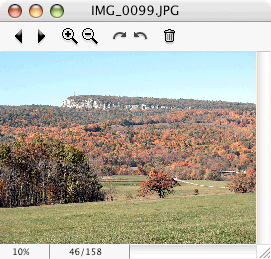
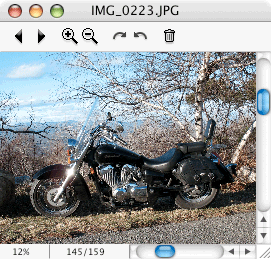
The main PicTracker window is the picture display window. Toolbar icons allow you to browse to the next and previous pictures, zoom, rotate, and delete images. Use the Zoom icons to zoom in or out.
The Previous and Next icons navigate through images in a folder, or just click on the picture to open the next one. Option-click (or alt-click) to open the previous picture, or shift-click to jump 10 pictures. Arrow keys also work for navigation, along with the Page Up, Page Down, Home and End keys.
The View menu commands allow more viewing options. Choose the Zoom cursor tool from the Cursor Tool menu to zoom in on a specific spot, option-click to zoom out. The Move cursor tool allows you to click and drag a zoomed image.
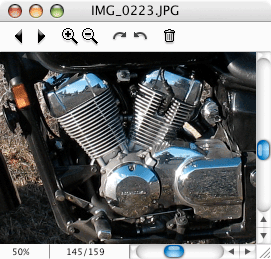
Other view options incude Full Screen and Scale To Fit. Scale To Fit scales the picture to entirely fit within the window, and is the default mode. Deselect it to view all images at their actual size.
To navigate into and out of folders, use the command key with Next and Previous icons or keys. When a folder icon is displayed in the picture window, a command-click will move you into the folder. Option-command-click moves up one folder. Power users should see Keyboard Shortcuts in the Command Reference for more quick keyboard shortcuts.
Use the Open Folder command to select a folder of images, including it's subdirectories. This opens a spreadsheet-style list of file names, sizes, and subdirectory paths. Select Show View Options to hide or display fields. Files in this list are available for viewing, copying, moving, renaming, verifying and other actions.


A common use of the file window is to browse through a folder of new files when deciding which to copy, rename or delete. Shown here is the file window with a selected image displayed in the picture window.
Collection lists save information on file sets, and are used for viewing and verifying them. They are a saved list of file names with unique identification information on each file. For picture viewing and slide shows, collection lists function as pointers to files. Shown here is a collection list being used to display an image from a collection folder. Path information is also stored in the list.
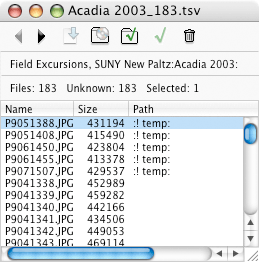
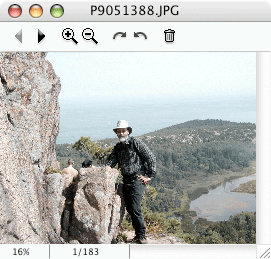
Because the collection list is a text file designed to be saved on a multiplatform CD or DVD, it does not contain absolute links to each file, but rather relative paths. This means that you need to specify the collection folder where the files reside. This is chosen by clicking the checked folder icon, or using the Collection Folder command. The collection folder is saved in the collection list, but if the folder is moved you may need to select it again.
To assist in setting up collections to be burned on CD or DVD, you can also specify a burn folder. This can be used to organize your files on a hard drive, but more importantly, correctly sets up the path information so the collection list will correctly link to files after burning to CD or DVD.
If you create enough collection lists to organize your pictures, you will probably end up needing a way to organize your collection lists! That's what the collection manager is for. The collection manager keeps track of each collection list that you open, and provides an easy way to locate and open those lists.
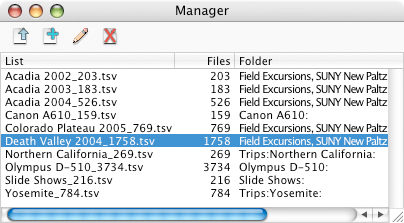
In addition to the list names and locations, the collection manager keeps track of a few other details. For example, the burn folder locations are stored by the manager, as well as some statistics such as the number of files and their modification dates.